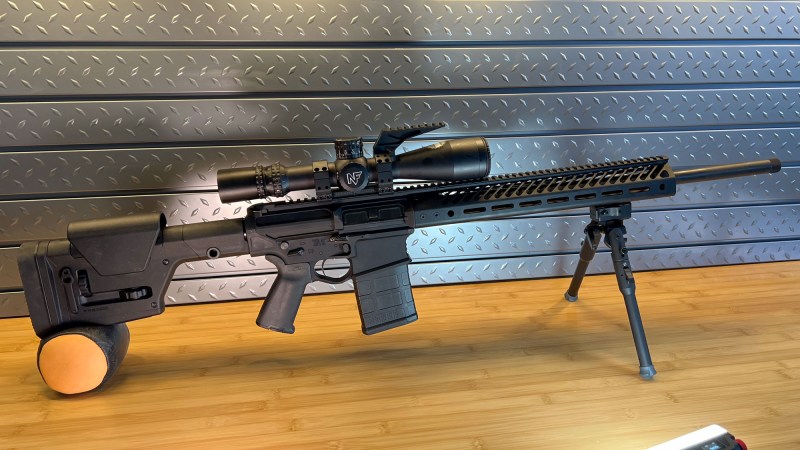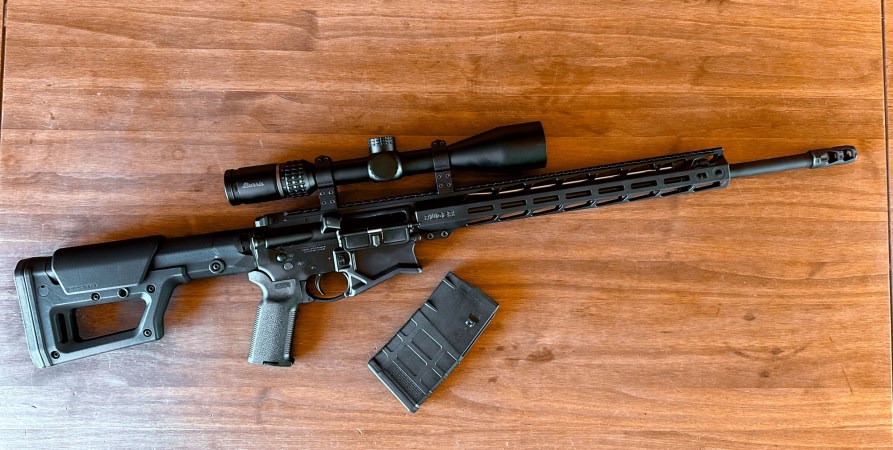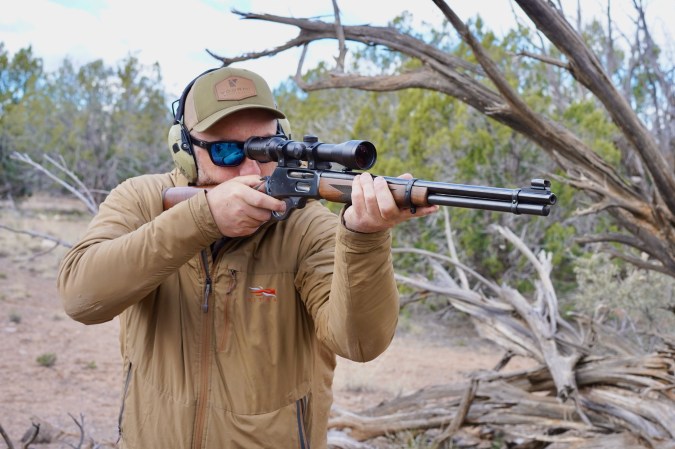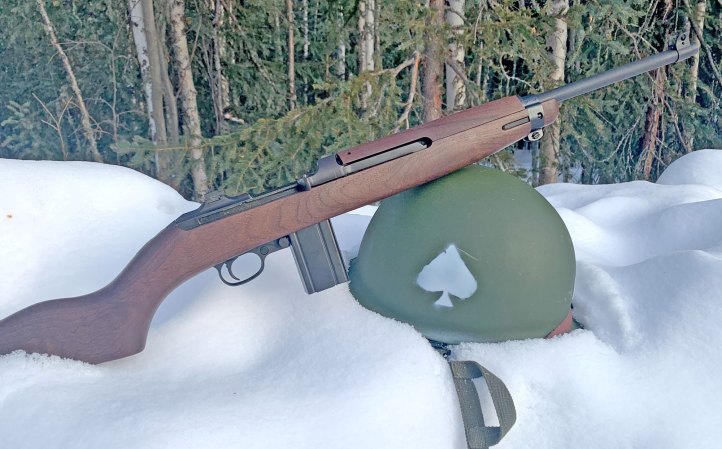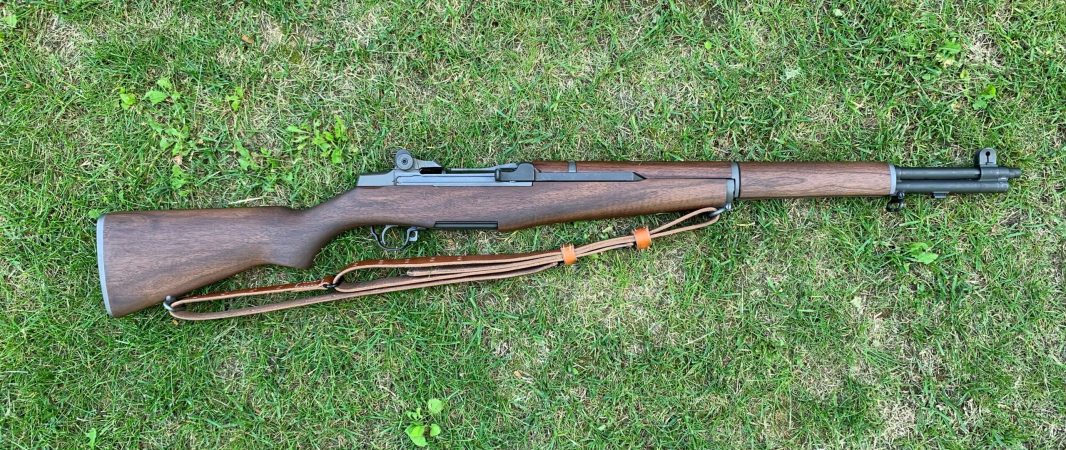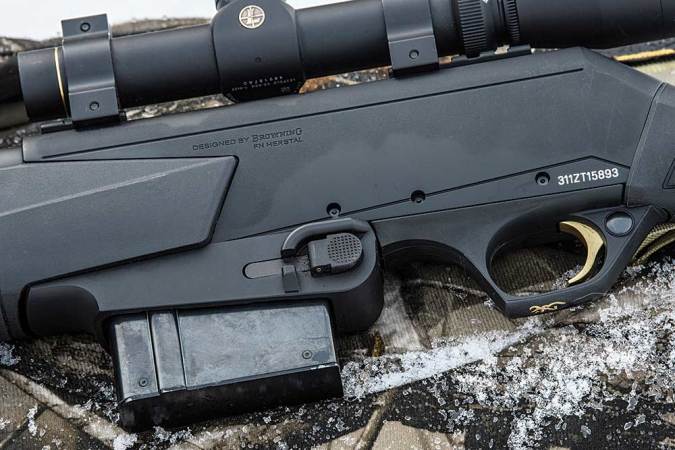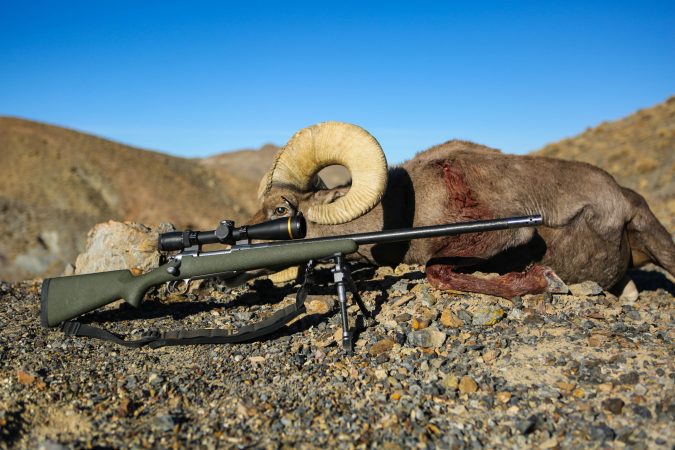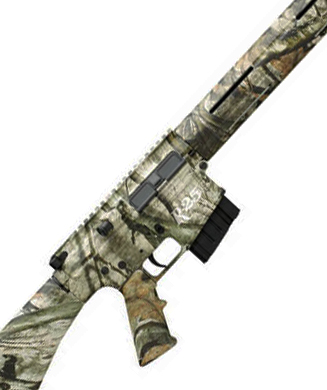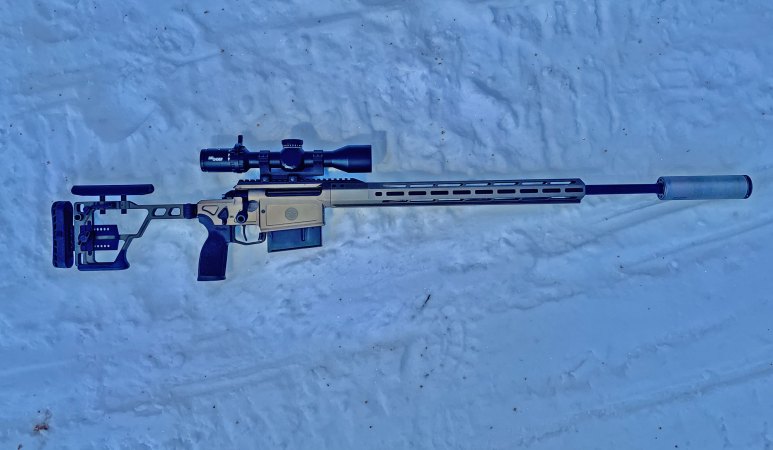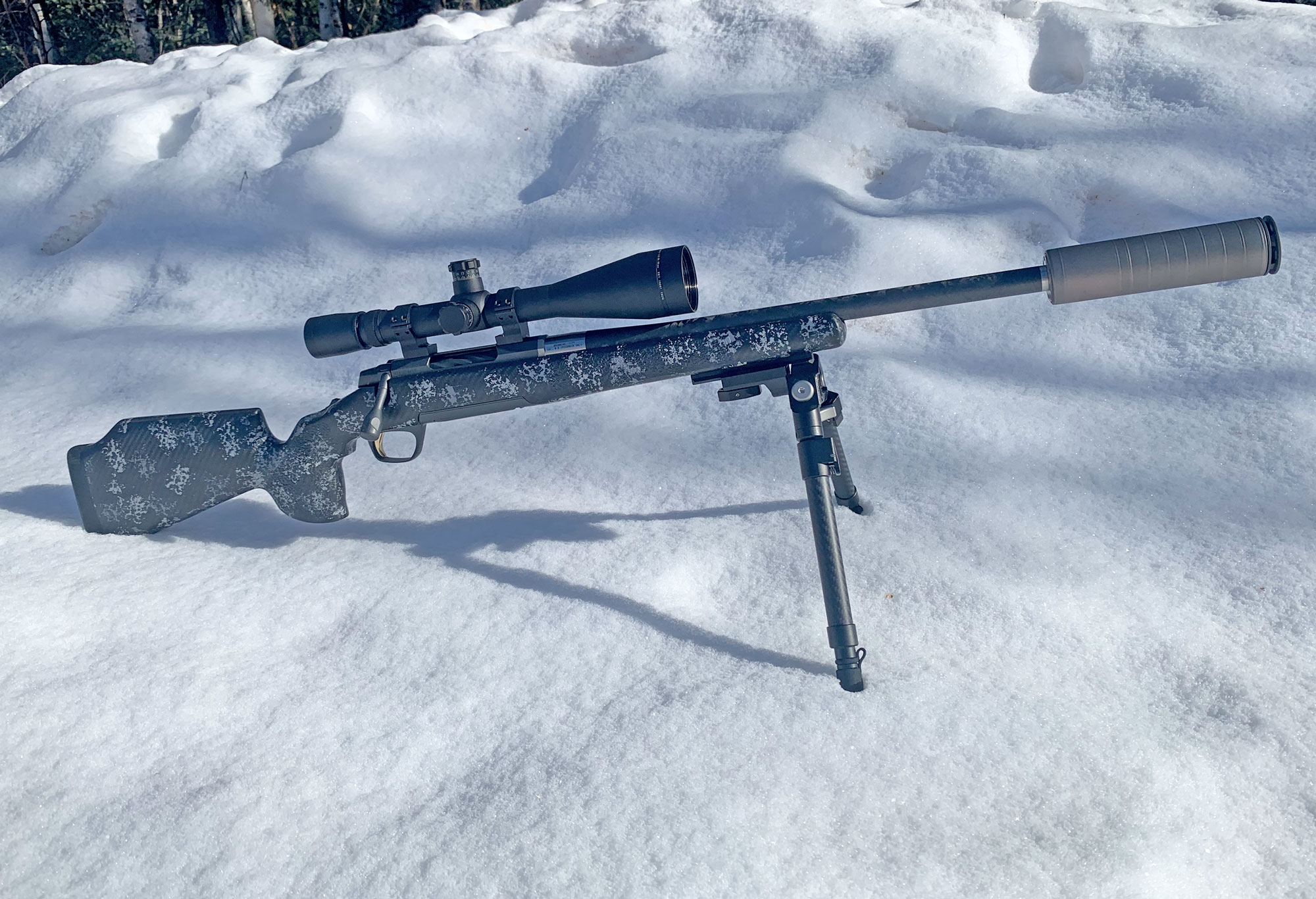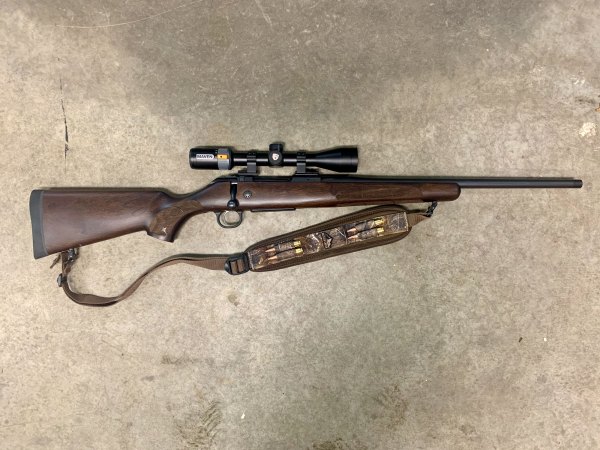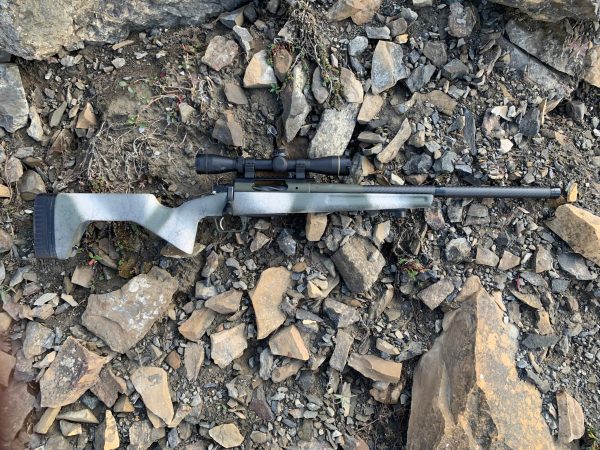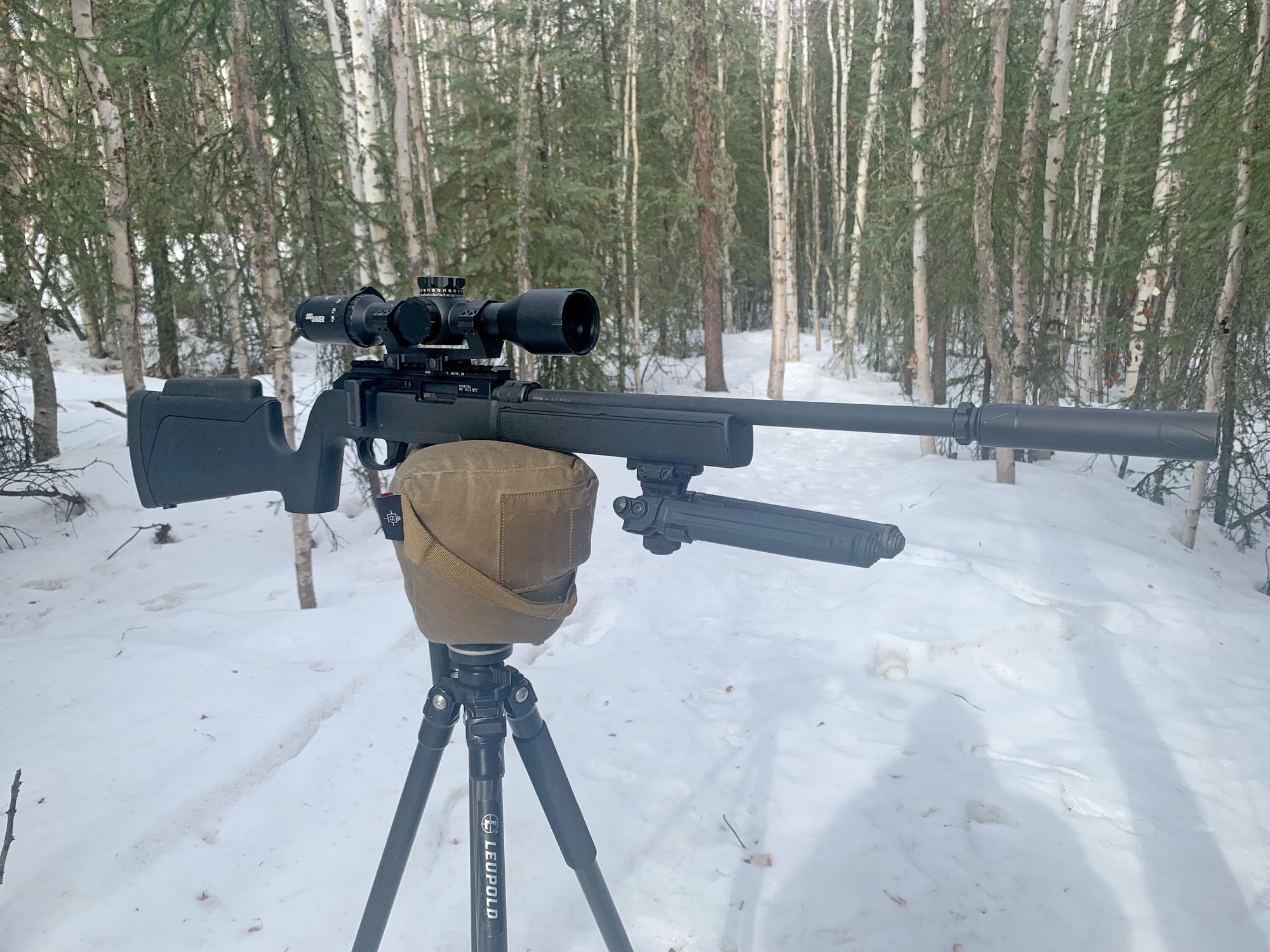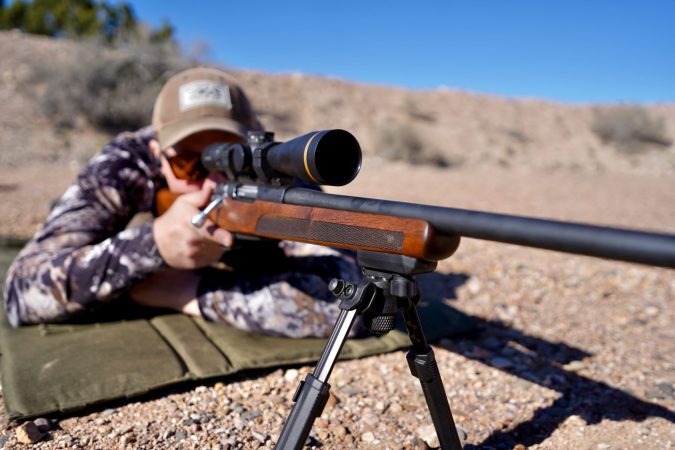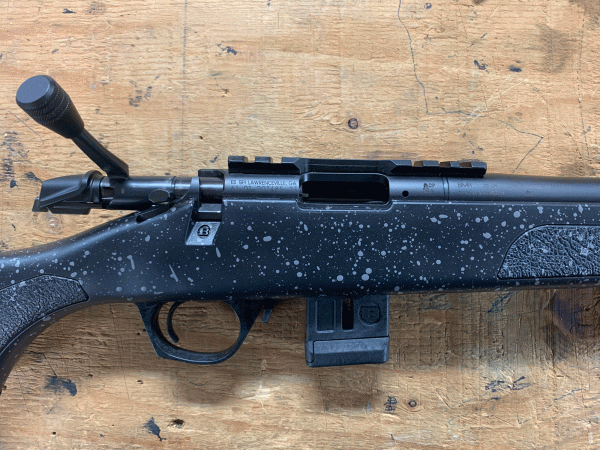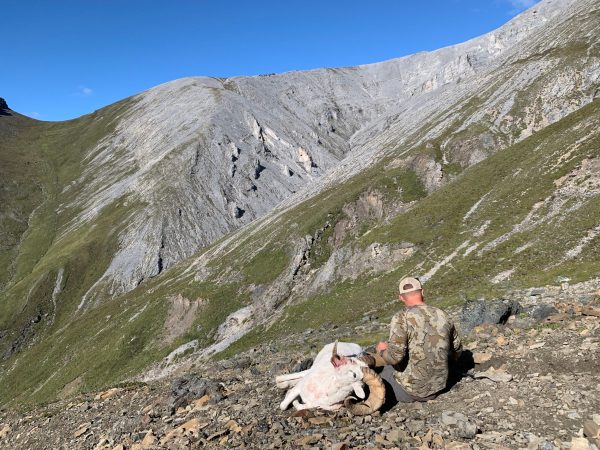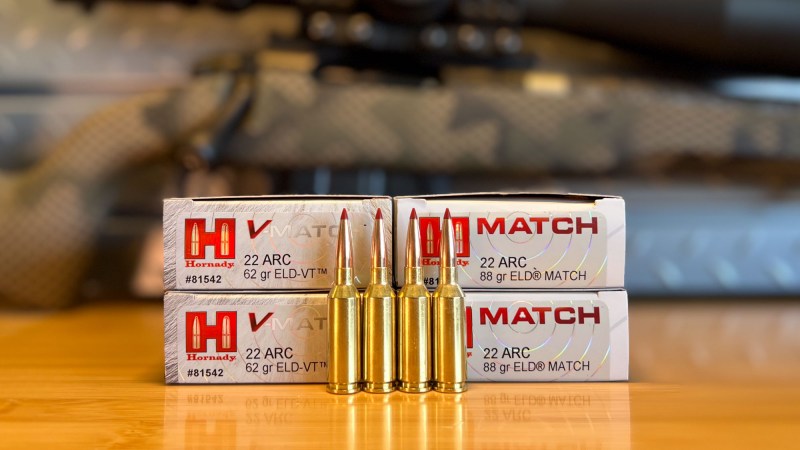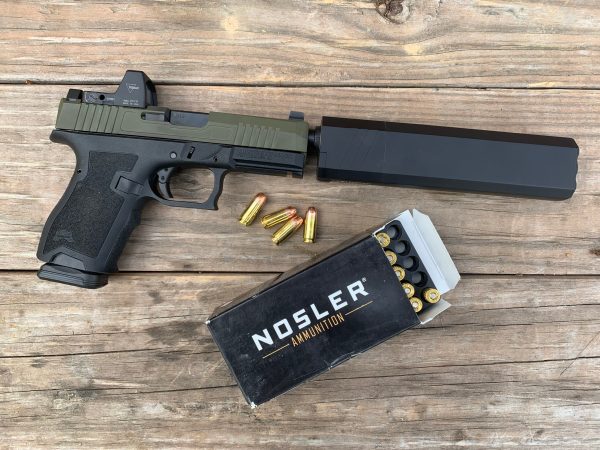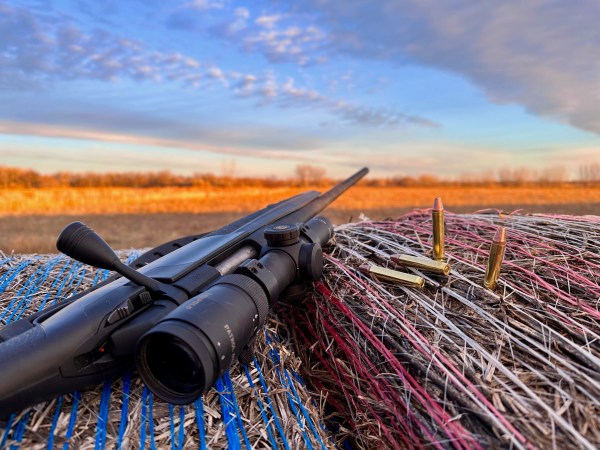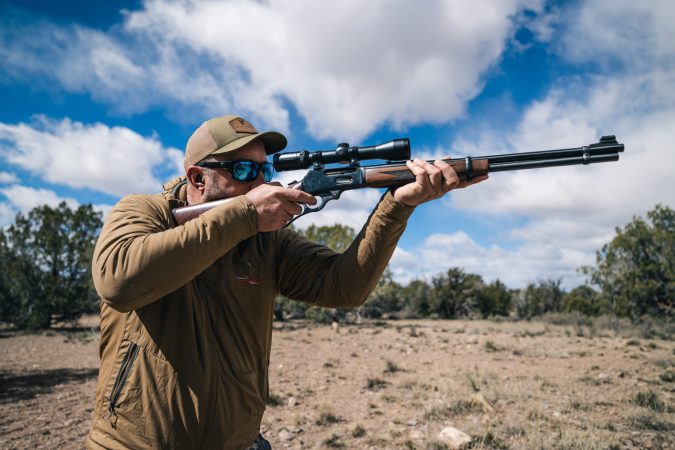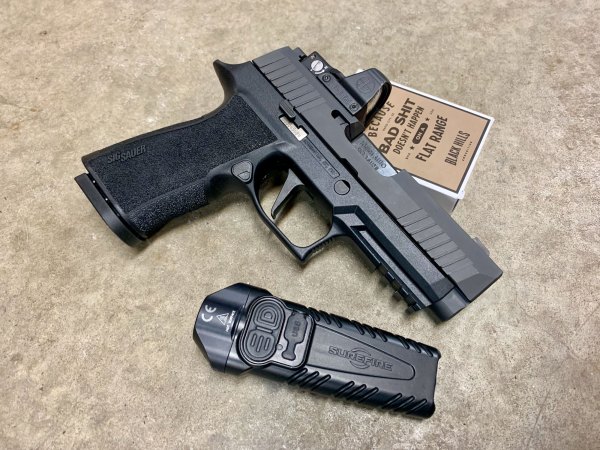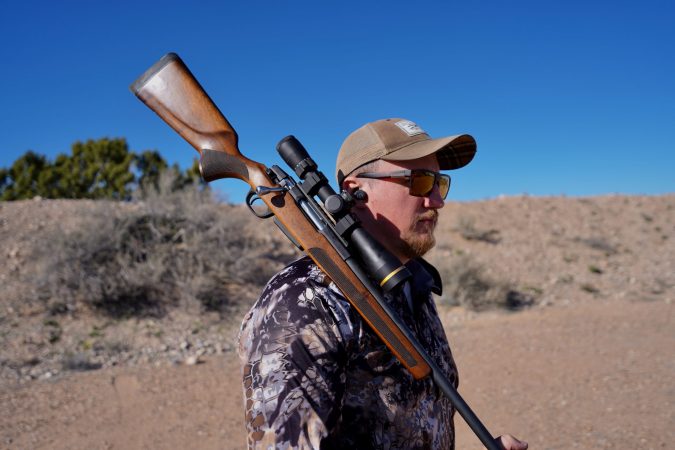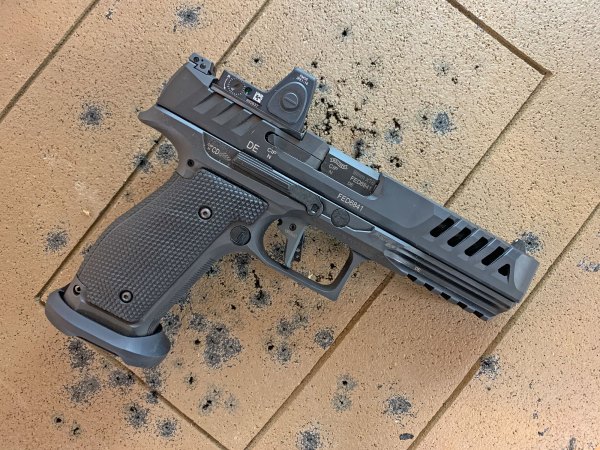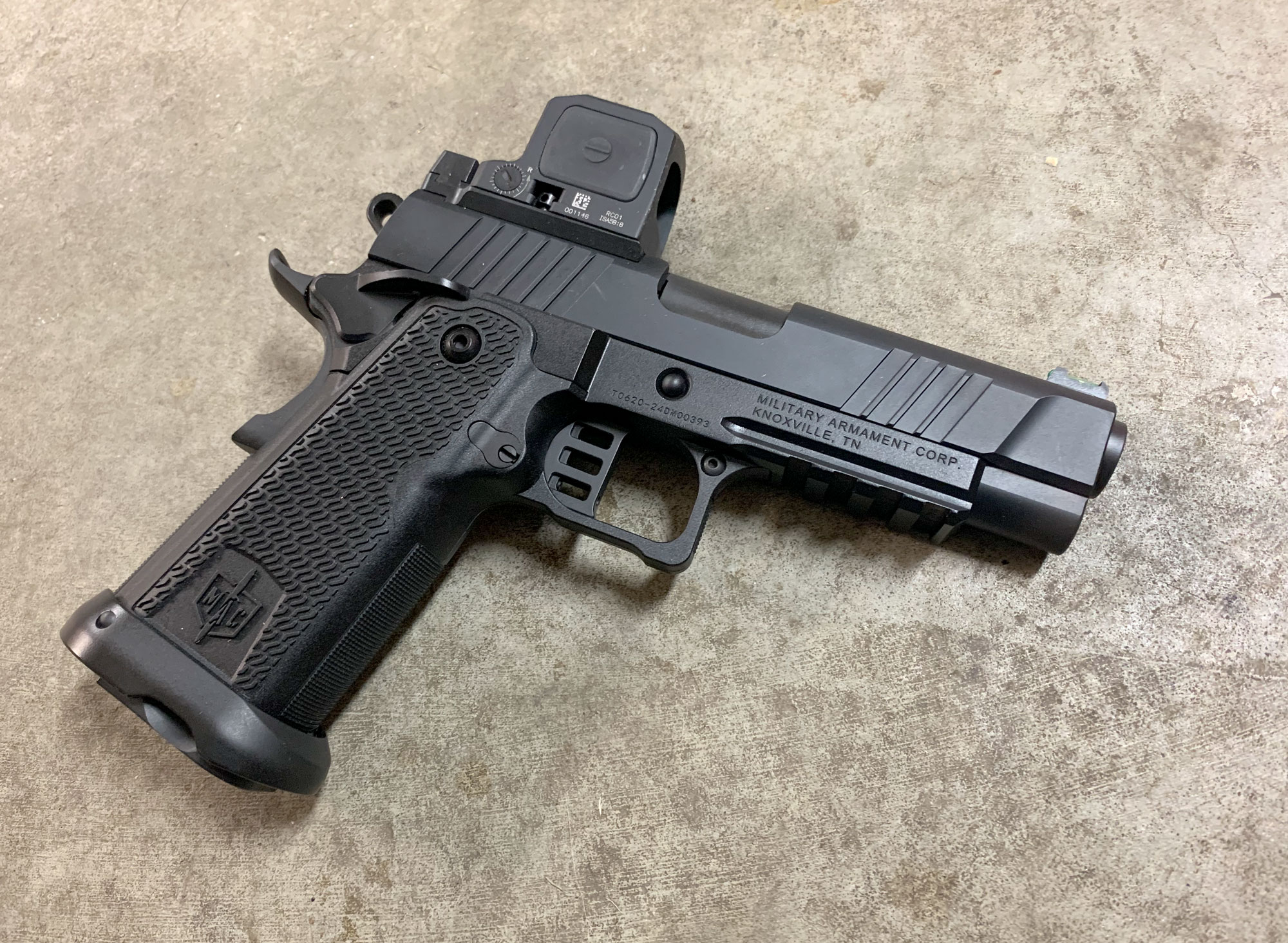We may earn revenue from the products available on this page and participate in affiliate programs. Learn More ›
The PSA Sabre AR-10 is a rifle that’s built in the style of designated marksman rifles like the Knight’s Armament M110. AR-10s have been around even longer than AR-15s, but in modern form, they aim to capture the benefits of a semi-auto gas gun while providing good accuracy and better long-range authority than those chambered in .223 Rem. or 5.56mm NATO. As with many of their other guns, Palmetto State Armory offers their version at a fraction of the price of many high-end AR-10s.
From the time I was ordering AR parts kits from Shotgun News, I’ve celebrated a bargain. But I’ve also learned to question them. With any type of rifle, you usually get what you pay for. But that doesn’t mean that affordable rifles are junk — at least not all of them. I enjoy a special satisfaction when finding guns that are both affordable and perform well, but I don’t cut them any slack. I’ve put over 600 rounds through a PSA Sabre 10 of my own in the past couple months — often in sub-zero temperatures — here’s what I think.
PSA Sabre 10 Specs
- Cartridges: 6.5 Creedmoor (tested) .308 Win.
- Barrel: 18 inches, stainless, 1:8 twist, threaded 5/8-24
- Receiver: Forged (billet models available)
- Stock: Magpul PRS Lite
- Trigger: PSA Sabre two-stage trigger, 2 pounds, 7 ounces (measured)
- Handguard: 15-inch knurled/slant-texture, M-Lok
- Gas System: Mid-length
- Weight: 9 pounds, 10 ounces (measured)
- Price: $1,249
H2 Key Features
- Ambidextrous safety selector
- Adjustable Magpul PRS Lite Stock
- 18-inch Free-float barrel
- Adjustable gas block
- Three-prong Sabre muzzle compensator
- M-Lok slots on handguard
- QD sling sockets on stock and handguard
H2 Review Highlights
- Good value and parts for the price
- Good trigger
- Great accuracy
- Gas system requires tuning for ammo and suppressors
- Accuracy: .952 inches (average of 37 5-shot groups)
H2 Configuration as Tested
- Scope: Nightforce NX8 2.5-20X50mm
- Scope Mount: Nightforce Ultramount 30mm
- Bipod: Magpul MOE
- Suppressors: Silencer Central Banish Backcountry and Silencerco Omega 36M
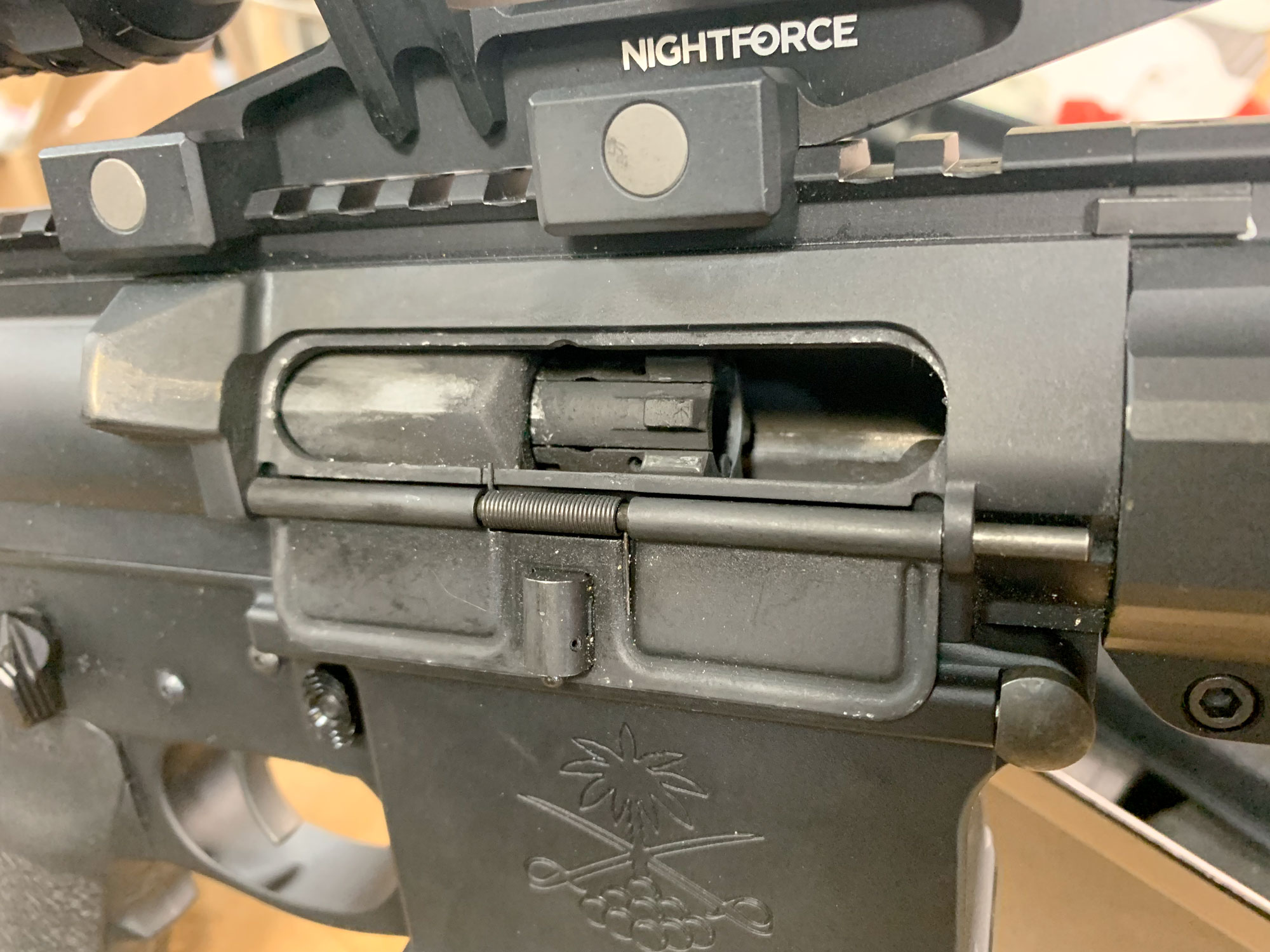
Tyler Freel
H2 Top Performing Ammunition
- Hornady Precision Hunter 143-grain ELD-X (0.881-inch average)
- Federal Premium 143-grain ELD-X (0.926-inch average)
- Hornady Match 140-grain ELD-M (0.975-inch average)
- Federal Gold Medal Center Strike 140-grain OTM (1.189-inch average)
The PSA Sabre 10: An Affordable AR-10
There are lots of AR-10 rifles on the market, many of which only have trivial differences. LIke the AR-15, the AR-10 is a machinists gun. Where it lacks the skilled craftsmanship that a hand-bedded, finely-tuned M1A or traditional bolt action has, it makes up for with standardization and interchangeability of parts. AR rifles are relatively easy to assemble and components are simple to swap. This makes it an attractive platform for tinkerers and easy to maintain for everyday shooters. The universal nature of these rifles also blurs the lines of perception between what you might be getting with an expensive rifle like the Seekins SP10 and what you can expect from a more affordable one like the PSA Sabre 10. The same goes for parts and uppers/lowers.
The difference in affordable ARs and expensive ones is in the details. Yes, they are similar. No, they are not the same thing. The components and on-range performance and reliability with hard use is where you’ll see the difference. With that in mind, let’s walk through the PSA Sabre 10. This rifle is available in both 6.5 Creedmoor and .308, and in a variety of configurations.
Receivers and Furniture
The PSA Sabre that I tested has a forged upper receiver and a basic Sabre lower receiver. There isn’t any fancy machining, no ornamental bevels or texturing, and the trigger guard is fixed. The whole lower has a black Cerakote finish and includes a Magpul grip. The upper receiver is forged in a similarly basic style with an integral Picatinny rail on top. The fit is a little loose between the upper and lower receiver — a very common, inconsequential thing with AR rifles. The PSA Sabre 10 lower receiver does not have a tensioning screw that some AR lowers do, but the wobble you feel doesn’t ever seem to affect accuracy. If you want an ultra-tight fit you can get an accuwedge or, as I did, simply add a piece of electrical tape to the top of the lower receiver on both sides, just above or forward of the rear takedown pin. The tape acts as a shim and eliminates play between the receivers.
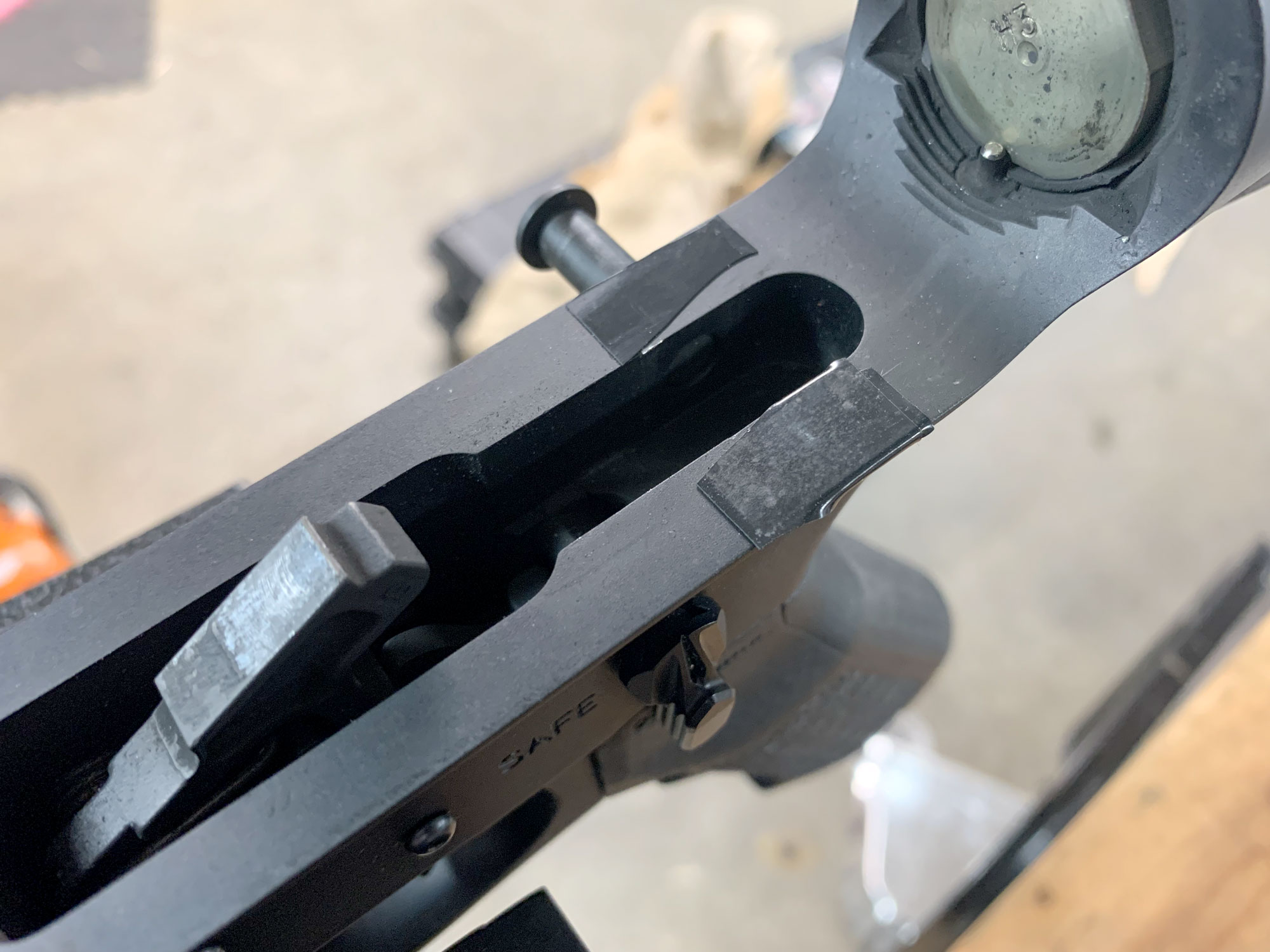
Tyler Freel
The handguard is a free float tube that clamps onto the barrel nut and has tabs on either side of the top of the receiver to prevent rotation. The octagonal handguard has knurled texturing on the side panels and slanted texturing on the 2-, 4-, 8-, and 10-o’clock sides. The rail has M-Lok slots at 12-, 3-, 6-, and 9-o’clock, and the top has a section of Picatinny rail at the front and rear. The handguard is useful for attaching accessories, and has a QD sling cup on either side. It isn’t too bulky, and is easy to get a support-hand wrap on for fast, modern-style, up-close shooting.
The rifle has a carbine-length buffer tube with a Magpul PRS Lite stock. This stock provides an adjustable fit for precision shooting, but isn’t cumbersome, and is half the price of the regular Magpul PRS stock.
Inner Parts and Gas System
The PSA Sabre AR-10 uses Palmetto’s two-stage trigger that’s held in place by anti-walk pins. It’s a little light for a rifle of this style. Regulation weight for a competition service rifle is 4 pounds, 8 ounces. The PSA Sabre trigger measured 2 pounds 7 ounces on my Lyman trigger pull scale, but it has a good balance between the first and second stages. The first stage is approximately 14 ounces, and an additional 1 pound, 9 ounces needs to be added to break through the second. Though I’d rather see it closer to 3 or 4 pounds, it’s an effective middle ground between providing a delicate, precision-capable trigger, and one that can be fired smoothly in a quick cadence.
The bolt carrier group is chrome-plated, which makes cleaning a bit easier, and the recoil lugs have some slight beveling—something that should help them last longer when subjected to heavier .308 and 6.5 Creedmoor fire and constant interaction with the barrel extension. The extractor uses a stout double spring, and the dual ejectors are stiff, and pop spent cases from the receiver effortlessly. The gas rings have a nice tight fit with the bolt carrier. The rifle uses a Radian Raptor LT charging handle and Radian Talon ambidextrous safety selector.
At the rear, the rifle has a Palmetto round-coil buffer spring and comes with an H buffer. Up front, it has a mid-length gas tube with an adjustable gas block — more on this in a minute. Generally, the rifle has all good-quality components, but they’re fairly pedestrian.
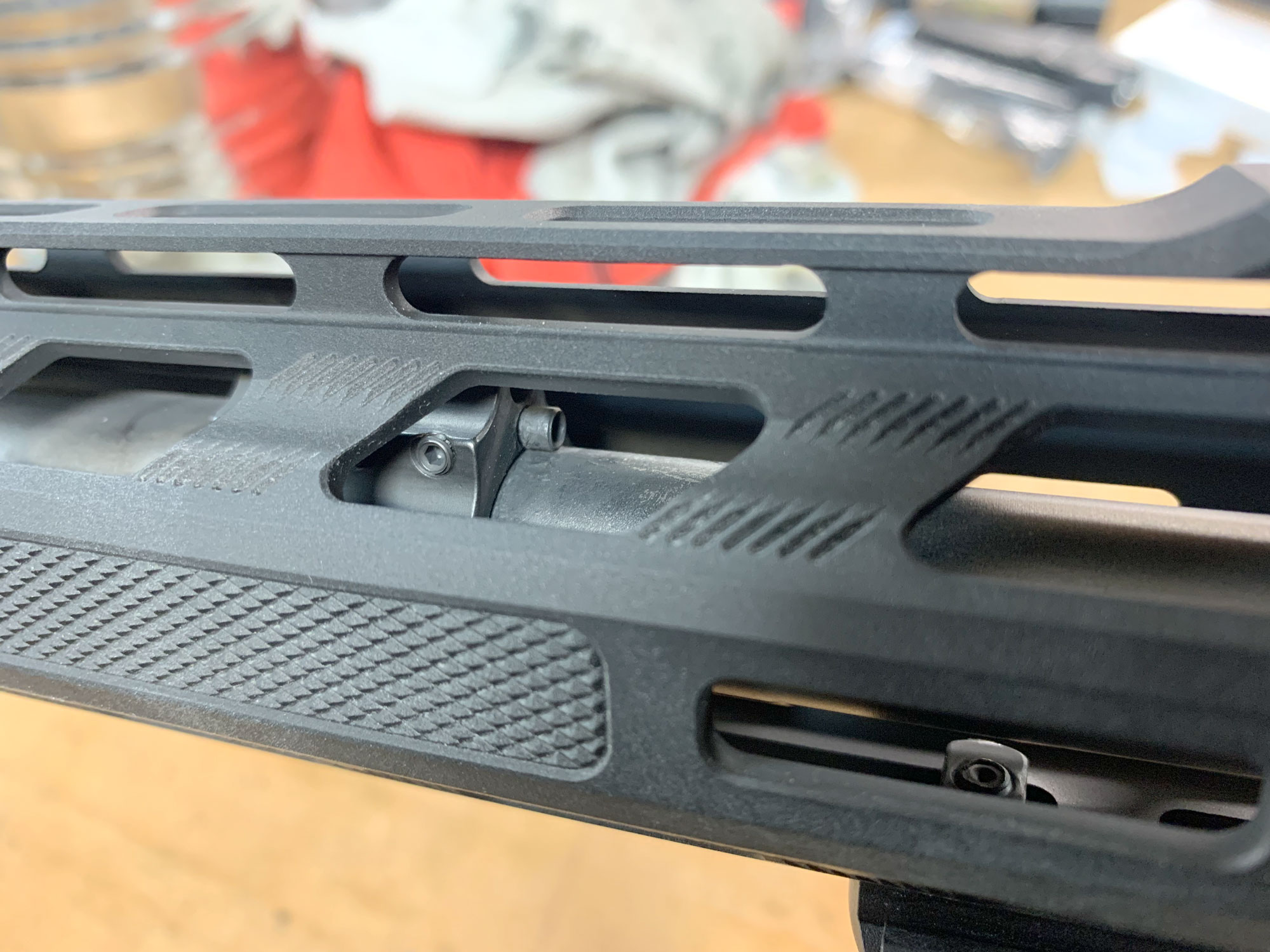
Tyler Freel
Shooting the PSA Sabre 10
Shooting the PSA Sabre has been both enjoyable and educational. Don’t worry, that doesn’t mean anything too bad, it just means that I’m still a slow learner. Though I’ve fired thousands upon thousands of rounds through AR-15 rifles, my experience with the AR-10 platform is more limited. My two biggest questions about the PSA were how accurate would it be, and how reliable?
The Importance of Tuning the PSA Sabre 10 Gas System
The rifle came with a guide for tuning the gas system, with the adjustable gas block set at the factory-recommended setting. A gas block is a part that slips over the barrel to direct gas up from the gas port drilled into the barrel, and back through the gas tube to cycle the action. An adjustable gas block of this style has a set screw that can be screwed in or out to regulate the flow of gas back into the receiver. This gas adjustment screw is down under the handguard, and the rifle comes with a long Allen key for turning it. On my first trip to the range, I left it on the factory setting. The rifle cycled well, so I left it alone — something the average shooter will do.
For the next trip, I removed the three-prong flash hider/compensator, and threaded on a Silencer Central Banish Backcountry titanium suppressor. For any rifle work that doesn’t involve full-auto fire or relentless mag dumping, this is an excellent can for this rifle. It’s light, short, and unobtrusive. In fact, with this shorter 18-inch barrel, it doesn’t really change the handling characteristics of the rifle at all. I can’t say that for the solid stainless suppressor I put on the 20-inch barrel of my first DPMS AR-10 many years ago.
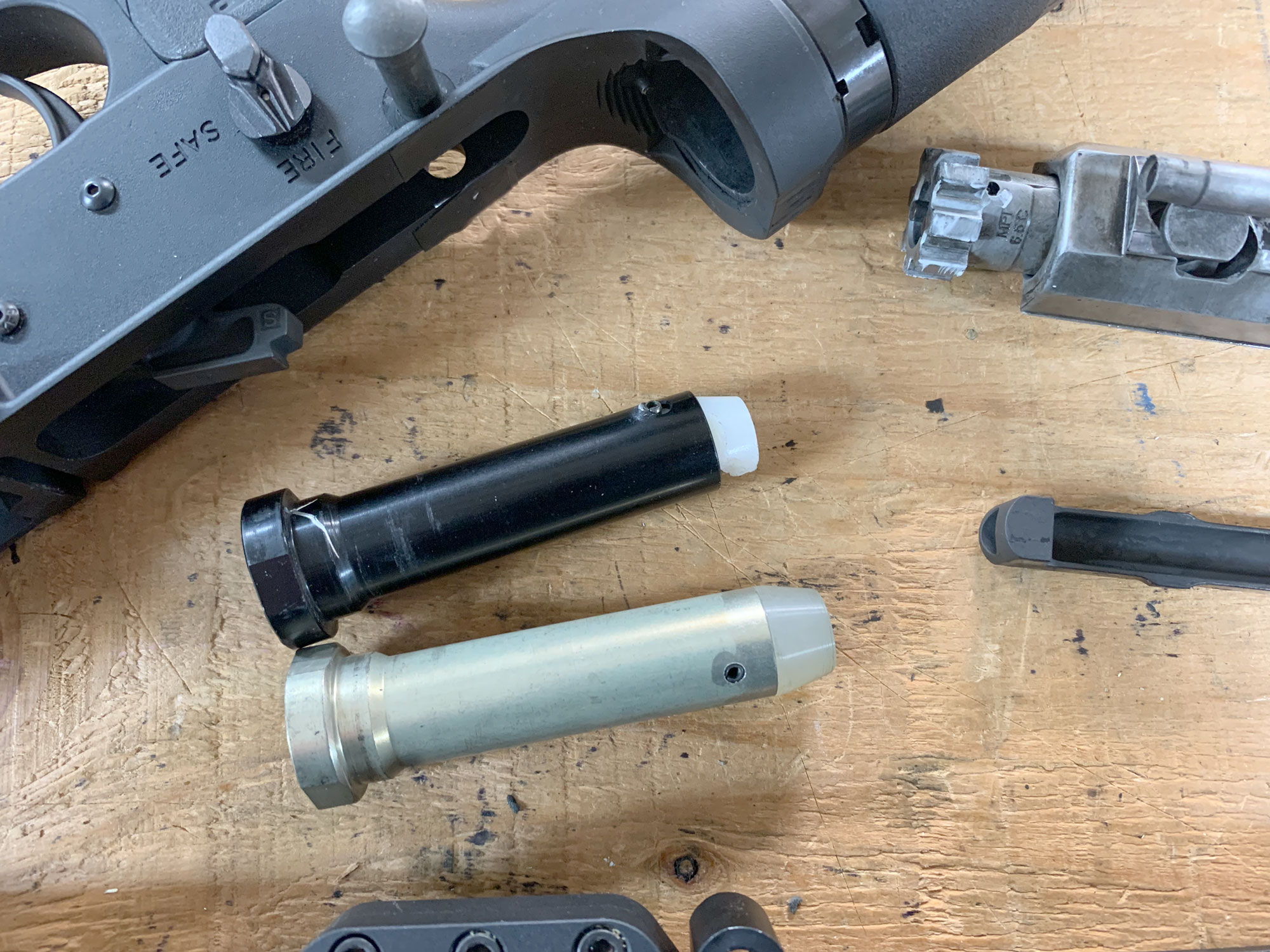
Tyler Freel
Overgassing the PSA Sabre 10 Will Break Stuff
I began shooting and collecting accuracy data using this suppressor and a Silencerco Omega 36m, a heavier modular can. I didn’t pay much attention and the rifle cycled fine, until it started ripping off two or three rounds per trigger pull. I should have diagnosed the issue immediately, but like I said, I’m slow. I was thinking that when resting on bags, the recoil was resetting the trigger and effectively bump-shooting the rifle. Eventually, my bolt catch broke — no sweat, that’s easy to replace — and when I tore the gun down to inspect it more closely, I noticed that I had smashed the buffer to hell. I had been running the rifle way over-gassed and the gun was sometimes out-running the disconnector. I knew that putting a suppressor on an AR or other gas-driven rifle will increase the gas pressure, I incorrectly assumed it wouldn’t be that sensitive.
The PSA Sabre 10 in 6.5 Creedmoor comes with an H buffer. I happened to only have a spare H3 buffer, which is heavier, so I installed that one. I turned the gas all the way down and slowly opened it until the gun would cycle reliably. This gave me a slow chachunk cycling speed, and ultra-soft recoil. I swapped back and forth between suppressed and unsuppressed with a variety of ammo and my takeaway is that you need to tune the gas for each individual load and any time you take off or put on a suppressor. If the gun is cycling perfectly with a can, it probably won’t run without the can until you open up the gas by a setting or two. If the rifle is ejecting brass forward, between 1-o’clock and 3-o’clock, you’re overgassed. Dial it down.
Gas System Lengths in AR-10 Rifles
I’ve noted that many of the more refined, and expensive, rifles have rifle-length (or longer) gas systems. The Seekins SP10, for example, employs this longer gas system with a heavy bolt carrier group and flat-coil recoil spring for smooth and reliable operation. It’s easy to get away with a variety of gas tube lengths with 5.56-class cartridges, but the .308 and 6.5 Creedmoor generate much more gas. I don’t think that the shorter gas system is as forgiving, and that’s a big difference between this and some of the rifles that cost two or three times as much.
Ultimately I found the PSA Sabre 10 to be quite reliable, but it does require careful attention to how the gas system is tuned. All of my shooting was done between minus 10 degrees and plus 35 degrees, and the gun ran well. In addition to shooting over 200 rounds collecting accuracy data, I spent a lot of time shooting at steel out to 350 yards and firing full magazines through the gun quickly to see how it would run. Like most ARs, it slows down a bit when it gets dirty, and opening the gas temporarily helps with that. Because it does require some adjustment, I think it’s wise to periodically rotate the gas adjustment screw through its entire range to prevent carbon build up and corrosion from seizing it.
Read Next: X-Bolt 2 Carbon Review
How Accurate is the PSA Sabre 10 in 6.5 Creedmoor?
I’m always a little nervous testing rifles and pistols on the lower end of the price spectrum because if they shoot like I hope they will, they’re a great bargain. Some of them are just a turd sandwich. One point upon which I am happy to brag on the PSA Sabre 10 is its precision. I shot the hell out of this gun, and the bead-blasted stainless barrel exceeded my expectations for a gas gun like this. I recorded 41 5-shot groups with 9 different loads (6 factory loads and 3 hand loads). For an accuracy average, I cut the bottom 10 percent of groups to eliminate error from fouling shots or human input. The best 37 groups averaged under an inch at .952 inches. If we average the best 10 groups I recorded, a protocol we have long used for our accuracy figures, we get an average of .689 inches. That’s only slightly bested by the Seekins SP10 that Snow tested (.650 inches).
The rifle liked a variety of factory ammo, like Hornady Precision Hunter 143-grain ELD-X (average: .881 inches), and shot Palmetto State’s AAC 140-grain Sabre Blade ammo well too (average: 1.600 inches). Overall, the rifle seemed to favor the Hornady 143-grain ELD-X bullet. I tried two factory loads and two hand loads with that bullet — all 22 5-shot groups combined averaged .892 inches.
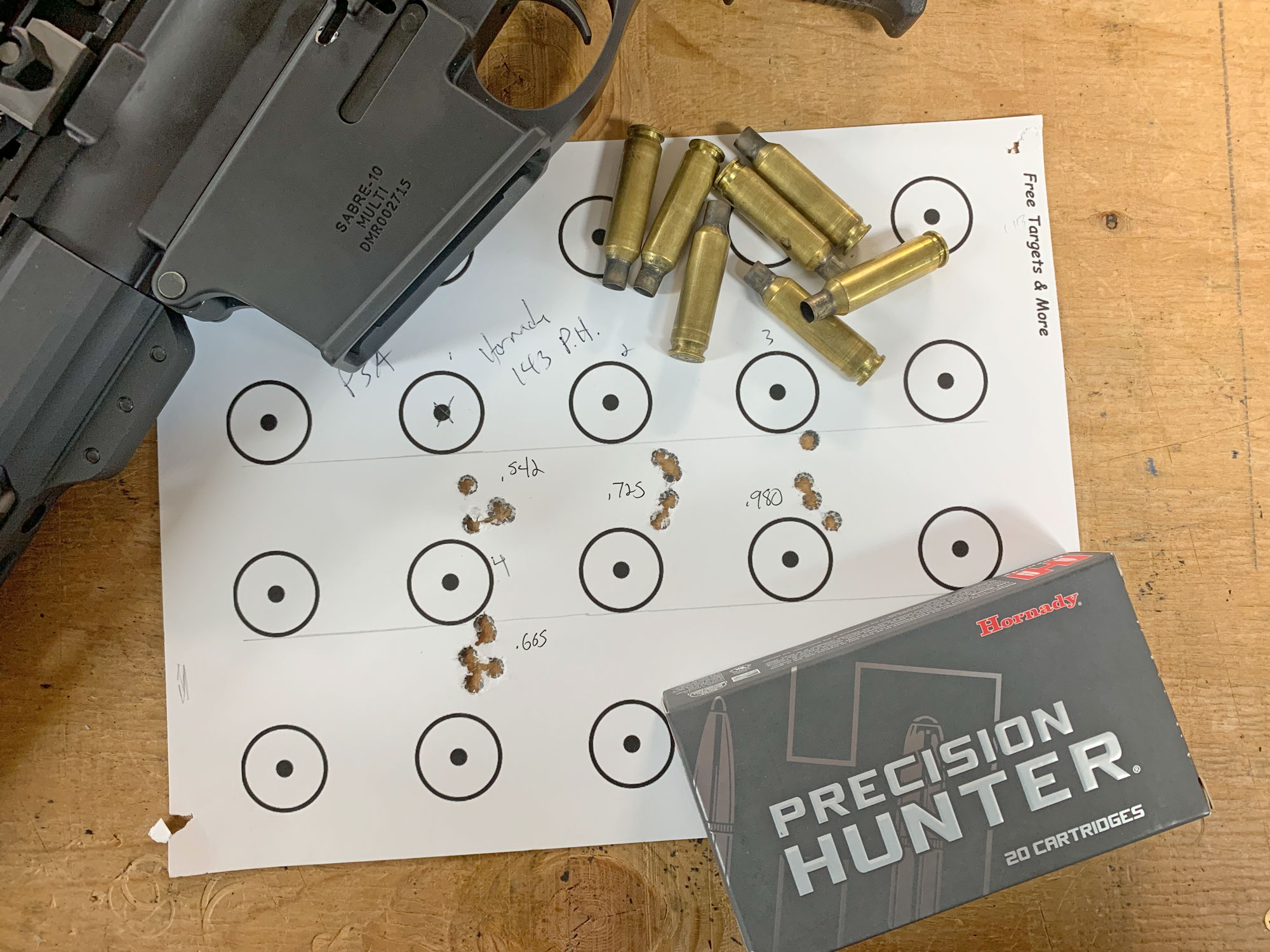
Tyler Freel
20-Shot Groups
At OL, we are always striving to improve our testing — sometimes to a fault, and that goes for accuracy data too. We have never collected as much data on each gun as we do now (no one else does either), and that allows us to present even more valid, relevant accuracy numbers. We have leaned on 5-shot groups over 3-shot groups for years, and although a large volume of 5-shot groups gives us a reliable average, the variability from group to group can still be frustratingly large. Any given 5-shot group has a good chance to be larger than the overall average.
A 20- or 30-shot group is a much more reliable figure, and almost any 3- or 5-shot group you fire will fall within the 20-shot dispersion boundary. Using group analysis software, we are able to plot each shot from multiple 5-shot groups to give us an aggregate group size. Another benefit of a 20-shot group is that we can calculate a valid mean radius. This is the average distance between each shot and the true zero of the group. If a shot has a radius of .25 inches, that means that the shot impacted .25 inches from the true zero point. Mean (average) radius is simply the average distance by which your shots miss the true zero. You can read a full explanation of mean radius here.Where the overall group size only tells you how far apart your worst two shots were, mean radius tells you how close zero your average shot in a spread falls.
How does that look for the PSA Sabre 10? Pretty damn good. With Hornady Precision Hunter 143-grain ELD-X, the PSA Sabre had a 20-shot group size of 1.13 inches and a mean radius of .337 inches. Shooting an old hand load using Hornady Superformance powder and 143-grain ELD-X bullets, it had a 20-shot group size of 1.245 inches with a mean radius of .411 inches. I’ve shot a lot of bolt-action hunting rifles that wouldn’t average that with 5-shot groups. It’s stellar.
Read Next: The M1 Carbine: The Most Prolific American Small Arm of World War Two
What the PSA Sabre 10 in 6.5 Creedmoor Does Well
I think that this rifle is a great value. It’s exceptionally accurate for a gas gun in its price range, has good parts, and is an excellent buy for an entry-level AR-10 that can perform. It has a good trigger, nice hand guard, and the PRS Lite stock is a great touch.
Where the PSA Sabre 10 in 6.5 Creedmoor Could Be Better
My only trouble with the PSA Sabre 10 was partly my own negligence. Though I did find the rifle to be perfectly reliable when carefully tuned for a given load, I don’t think the mid-length gas system is as forgiving as a longer one could be. A shooter who isn’t paying attention is likely to tear the gun up or encounter reliability issues.
FAQ
After testing I believe the PSA Sabre 10 is a fair and good value. Whether it’s worth it to you depends on your personal tastes, expectations, and applications.
Yes, Palmetto State Armory guns are American made.
Yes, the PSA Sabre comes with an adjustable gas block to fine-tune the gas system.
Final thoughts on Palmetto State Armory’s PSA Sabre AR-10 in 6.5 Creedmoor
This project has been quite satisfying, and that’s not just because I had an excuse to execute mag dumps for science. My heart roots for the underdogs in the gun world. Though many of them are disappointing, I get excited about the ones that perform well. I think that you get what you pay for when it comes to rifles, including ARs. The PSA Sabre 10 is not a Knights Armament M110 or a Seekins Precision SP10 in the way that Ruger Precision Rifle isn’t an Accuracy International AT-X. That doesn’t mean they aren’t both great guns. Performance for price, I think it’s a great value, and a genuinely good rifle for anyone wanting to get started with the platform. It’s shockingly accurate, and the modular nature of the platform allows you to adapt, improve, and tune it yourself.



